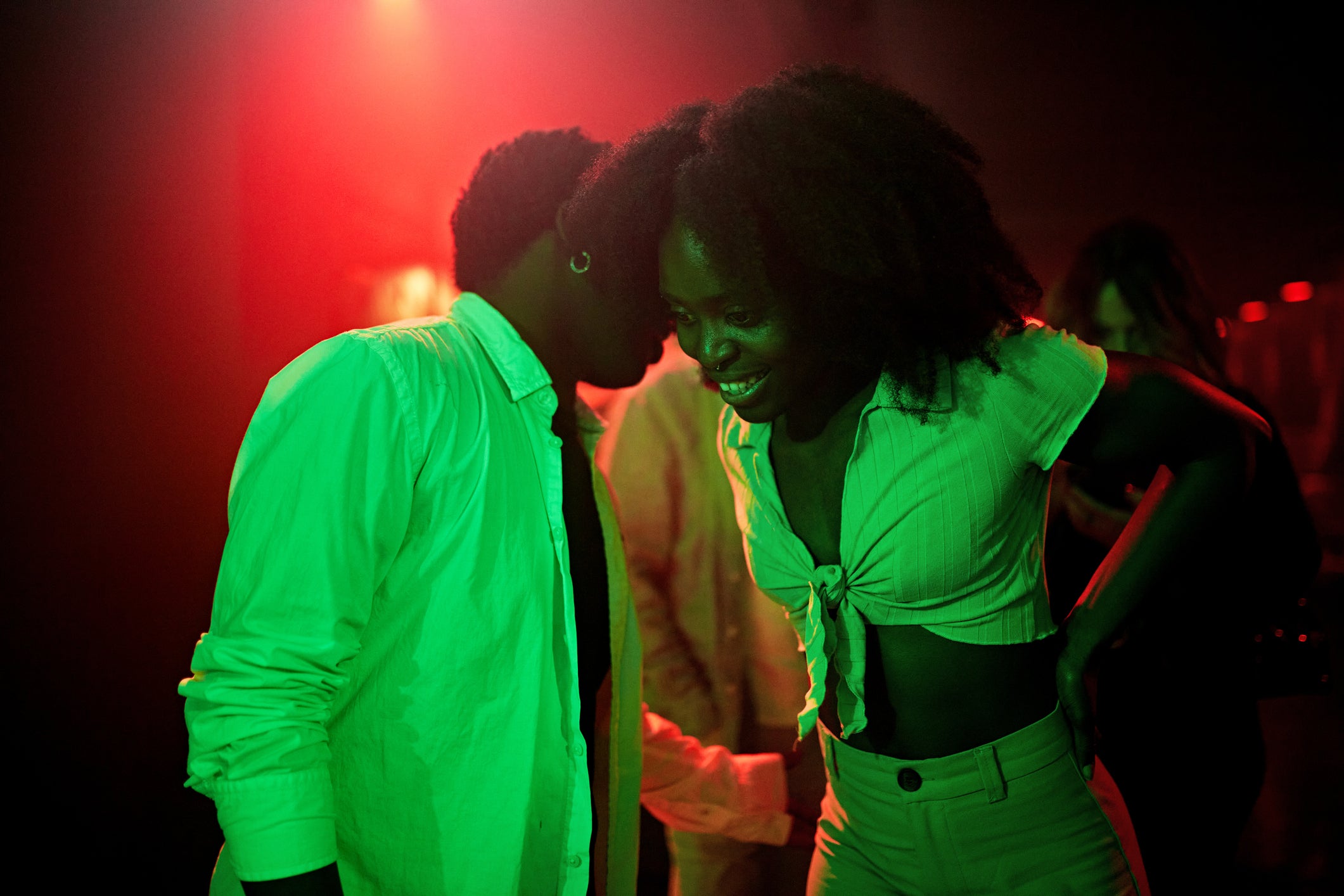At last year’s work Christmas party, my colleague and I told everyone we were “on the scrag”. Both single and in our early forties and late thirties respectively, we were joking (sort of). But our announcement was initially met with blank-eyed stares from bemused Gen Z colleagues, all of whom were unfamiliar with this particularly uncouth bit of Noughties slang. “You know, on the pull,” we explained. Now their eyes popped out of their heads. “Oh my goodness! Wow, really?” squeaked one twentysomething workmate. They seemed giddy at the notion – the audaciousness of it. Which, given they belonged to the very demographic that ostensibly should be indulging in such primal, mate-finding behaviour, was somewhat surprising.
As it turned out, they were shocked because the age-old art of prowling bars and clubs looking for a snog is no longer the commonplace practice it once was. Dressing up, drinking and dancing with the express purpose of locking eyes with a passably attractive stranger, giving them the nod and mouthing “get your coat, you’ve pulled” across a darkened room (not that I was ever quite that brazen) is now something of a relic from the past.
Part of this can be attributed to the pronounced decline in British nightlife. According to a 2025 report from the Night Time Industries Association (NTIA), one in four late-night venues has closed since 2020, totalling nearly 800. Rather than improving post-pandemic, the situation has worsened – the sector dipped by 1.7 per cent between March and June just this year, equating to three net closures a week.
It’s hardly surprising, given the lifestyle shift that has seen young people turn their backs on late-night partying. In NTIA’s 2025 consumer research survey, 61 per cent of respondents reported going out less frequently in the past year, with only 16 per cent stating they go out more after 10pm. Money is a key factor; 68 per cent of young people said the current economic climate was to blame for this reduction, while 53 per cent reported spending less on going out compared to last year.
Of those who are still going out, they may lack the social lubrication – aka Dutch courage – required to make going “on the pull” anything other than a truly horrifying prospect. Nearly half of those surveyed for the latest quarterly Night Time Economy Market Monitor report said they either never drink or drink only once a month or less. Three in five (59 per cent) said there is less social pressure to drink alcohol now than in the past.

Although this is undoubtedly a boon health-wise, it’s not hard to make a link between abstinence and, well, abstinence. The past decade has seen a marked decrease in sexual activity, particularly among Gen Z. In the US, with nearly a quarter of people aged 18-29 reporting having had no sex in the previous 12 months in 2024, according to data analysed by the Institute for Family Studies – a figure that had doubled since 2010.
Celibacy rates have climbed in the UK too; the past few decades have revealed a downward trend in sexual activity, both in terms of the frequency and number of partners, among young people. A recent poll by sex toy company Love Honey found that Gen Z adults were having less sex than their parents’ and even their grandparents’ generation, averaging 0.7 times a week compared to 1.2 (Gen X) and 0.9 (baby boomers).
This sex slump has gone hand in hand with the replacement of real-life interactions – such as, yes, going “on the scrag” – with time spent online. The pandemic clearly also had a huge impact on how people interact, with wide-ranging and long-lasting effects that have rippled well beyond those challenging couple of years. Youngsters who came of age during lockdowns never experienced the joys of the messy night out; at an age when their elder counterparts had been playing tonsil tennis with strangers on sticky dancefloors, they were trapped indoors and told that physical contact was the enemy.
Simultaneously, the rapid rise of dating apps has almost made chatting someone up in a bar feel not just antiquated but obsolete. Ofcom’s 2024 Online Nation report revealed that one in 10 (4.9 million) UK adults had used an online dating service the previous year, with this number rising to one in five for 18-to 24-year-olds who had used an app in May 2024 – the highest reach among any age group. It makes sense: why deal with the potential humiliation of a face-to-face rejection out on the town when you can stay safe behind a screen, swiping and ghosting at will from the comfort of your bedroom?
The thing is, young people aren’t actually happier with this virtual version of romance. Pew Research Centre identified dissatisfaction with apps regardless of gender: women who’d used online dating platforms were more likely to feel overwhelmed by the number of messages they get, while men were more likely to feel insecure about a lack of messages. A 2025 health survey by Forbes found that 79 per cent of Gen Z had experienced dating app burnout. More than half (51 per cent) said they felt burned out by dating apps often or always, a higher proportion than any other age demographic.
In some cases, this has translated to twentysomethings turning back to IRL alternatives – as seen in the recent resurgence in in-person dating events like singles nights, supper clubs and speed-dating. Although arguably a step in the right direction, there’s still something a little too… safe about it. A little too clinical. Everyone knows why they’re there, all mystery stripped away – the equivalent of a job interview for a partner crossed with a lab-grown romantic encounter.
It’s a world away from going out on the pull. Yes, it was scary, and messy, and embarrassing. But it felt visceral and unerringly authentic. It wasn’t mentally exhausting or emotionally draining in the way that modern courtship so often is, played out via the medium of endless messages sent into the void with no date in sight. There wasn’t the threat of being suddenly blocked for no discernible reason or the oh-so-disappointing possibility of meeting a perfect-on-paper match only to realise there’s no attraction within milliseconds.

Chatting people up meant being able to assess instant chemistry without wasting time on pointless digital interactions; it meant making mistakes, but also occasionally finding the miraculous in the magic of an unexpectedly brilliant first encounter. Making repeated eye contact with someone while grinding to Sean Paul’s “Gimme the Light” was vaguely terrifying but also exciting – that rush of adrenaline as you frantically wondered whether he was checking out you or your mate, whether he’d march over and snog you, whether (after another tequila) you’d get up the courage to march over and snog him. The not knowing was agonising but exhilarating. And a knock-back felt awful – but it also, crucially, built resilience.
So much of Noughties culture has made a comeback in the past few years, with everything from music to fashion riding into the mainstream on a wave of nostalgia. Is it too late to bring back this good old-fashioned, down-and-dirty brand of courtship, too?




